accommodating people with environmental intolerances in intentional community living
by Julie Genser
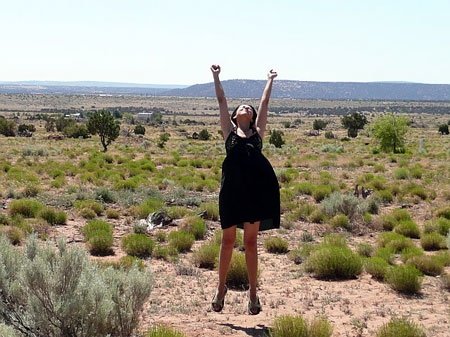
I cried when I read in Communities’ Health and Well-Being issue (Winter 2009) about Fred Lanphear,1 an elder of the Songaia community who was diagnosed with Amyotrophic Lateral Sclerosis (ALS) and appealed to his community to help him face this last stage of his life with grace. His community embraced him, tucking him in to bed every night, helping him stretch and do yoga, and celebrating his life with a ceremony while he was still alive and able to participate. His story stood in stark contrast to that of artist and poet Bene Barrymore, a senior disabled by a toxic brain injury.2 Instead of enjoying her retirement years in comfort, surrounded by family, Bene struggles for survival each year during pesticide spraying season. The 77-year-old has severe environmental sensitivities and the neurotoxic fumes from bug killers cause her to flee the comfort and safety of her home to live in her car for months every year to avoid becoming even more debilitated. Not exactly the ideal vision of how to spend one’s retirement years.
Bene did not get a celebration from her community honoring her as an elder when she got sick; instead she gets to face difficult symptoms and a life on the run completely alone. There is little compassion in our world today for people whose very existence questions the sanity of a global dependence on chemicals, pharmaceuticals, petroleum, and other substances that make our culture of capitalism go ’round. Unfortunately, there is a hidden population of thousands of others like Bene, fleeing their homes and neighborhoods to escape the daily poisoning our chemically and electronically addicted society blindly and indiscriminately inflicts.
A New Conversation
As Joshua Canter wrote in his article “The True Need for Community,”3 “the element of community is one of the greatest factors in healing.” Who needs healing – and thus, community – more than those who are ill? And so I want to start a conversation. The conversation I’d like to start is this: What are intentional communities willing to do in order to accommodate those with chemical, electrical, and other environmental sensitivities? Are intentional communities willing to be educated about the difference between green/sustainable and non-toxic? Are intentional communities willing to expand their notion of disabled, and count non-toxic housing and common facilities as necessary as a handicapped-accessible bathroom? Are intentional communities willing to accept that sustainability issues may have to be relegated to the back burner in order for some people merely to survive?
Some of the basic facts:
• There are millions of people in the world suffering from some form of environmental illness (EI) today, who experience mild to life-threatening physical reactions to extremely low levels of chemicals, mold, foods, electrical fields, and other environmental factors.
• A large number of people with environmental sensitivities are homeless, living in their cars, in a tent in the woods, in run-down trailers, or are prisoners in toxic apartments and homes across the country because they have no other housing options.
• Due to the nature of the illness, many people with environmental illness experience rejection, blame, abandonment, ridicule, anger, and even assault (from the intentional use of substances known to cause bodily harm) from the people they know and love most. They often live in near isolation just to avoid exposure to the chemicals and other substances that cause them debilitating symptoms.
• Because of the loss and separation from most everything and everyone they know and love, many EI’s experience post traumatic stress disorder (PTSD) as part and parcel of getting the illness, and the daily trauma that comes from the social isolation imposed by the illness can sometimes feel worse than the physical symptoms themselves.
• Many EIs lack access to medical care, food, and housing due to their environmental intolerance – physician/health practitioner offices are inaccessible due to the use of air fresheners, cleaning chemicals, and perfumed patients and health care workers; food in supermarkets and even health food stores is contaminated by fragrant product displays located near open food displays; standard housing is usually rife with triggers: from formaldehyde in building materials and toxic glues used in construction, to mold, faulty electrical wiring, and air fresheners used by former tenants.
• In order to survive and thrive, people with environmental illness must adopt non-toxic lifestyles that are very much aligned with intentional community values.
• There are approximately 2,200 intentional communities worldwide that might make ideal homes for those with environmental illness due to their adherence to a chemical-free lifestyle, if not for a combination of any of the following factors:
• lack of tolerable non-toxic sleeping/housing accommodations;
• use of wood-burning stoves, gas, propane and oil for heat and cooking;
• residents’ past use of toxic laundry products (fragrance chemicals from fabric softeners and some detergents can stay in clothes forever, even if you have since switched brands to an ecological, scent-free product);
• residents’ use of certain fragrant plant-based and other natural products such as essential oils;
• use of candles, incense, and other scented products in public, shared spaces;
• use of WiFi, cell phones and other wireless technology;
• use/location of solar inverters;
• moldy conditions;
• tobacco/marijuana smoking policy;
• dietary restrictions (many with chronic illness may have dietary needs that are in conflict with vegetarian and/or raw dietary requirements that are common in many communities);
• ignorance about the condition.
The Ideal Solution
If one of the underlying intentions of “intentional” communities is to provide a healthy, community-based alternative to a more modern, technology-based life, then intentional communities could be an ideal living solution for those not only suffering from environmental illness but other chronic illnesses as well; for these are the people who are not thriving in conventional lifestyles and need to transform their reality the most.
But being sick can often mean not being able to function in nor contribute fully to a group situation – physically, financially, emotionally, or otherwise. It might even seem that someone recovering from a chronic illness could potentially drain the resources of a community. For this reason, many communities may hesitate to take on members with existing health conditions that render them unable to contribute as much as others to community life. Is it possible to shift this paradigm of illness-as-adversary so communities can actually look to their less able-bodied members as contributors to, rather than detractors from, their common goal? To see their cohabitation with differently-abled members not as a sacrifice but, as Sweigh Spilkin writes of her own journey with environmental illness, “a sacred part of a larger ceremony?”4
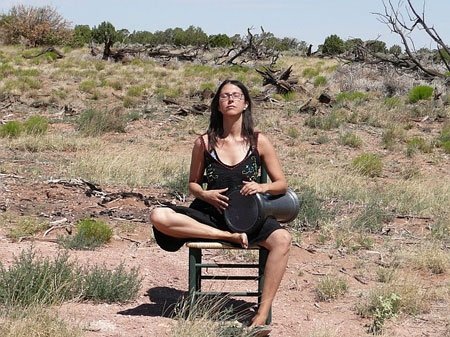
Illness as Opportunity
Monetarily speaking, those with EI do not have to drain the financial resources of a community; many are receiving Social Security Disability Insurance benefits and have a reliable monthly income. Those who are not able to contribute financially could barter services like food preparation or organic gardening.
Taking on members who are on a recovery path can provide a community with many opportunities for collective evolution, including the opportunity to: slow down and rethink priorities; appreciate different levels of health; deepen spiritually from members who have evolved in this way due to their physical limitations; be more deeply educated on the toxicity of everyday products; see how facing adversity together can serve as a powerful initiation to a new phase in communal growth; appreciate the preciousness of life in every single, beautiful moment. Community members can come to know that suffering/illness/disability is something sacred, a teacher to be valued – that from suffering, comes strength.
Needing to pay attention to certain details in order to accommodate those with finer tuned needs will only benefit the health of the community and the individuals that comprise it in the long run. For example, wood smoke – “one of the most harmful air pollutants we have on earth”5 – is known to be a huge health hazard that contributes to asthma and other respiratory ailments in children and adults, yet wood is commonly used for heating at intentional communities. Wood smoke is also a big deterrent to living in community for those with EI. Likewise, the long-term health effects of WiFi systems and cell phones are suspect enough for whole countries to issue warnings to their citizens (Germany,6 the European Union7) and yet are also frequently seen in intentional communities across America. Heeding the warnings that those with environmental illness call out through their immediate and more pronounced reactions to certain substances may help prevent your community members from developing cancer and other serious ailments in years to come. Any wise community will embrace these “canaries in the coalmine” and recognize their value in contributing to the long-term health and survival of the community.
Areas for Educating
Some of the issues that may potentially cause misunderstandings and difficulties between EIs and their communities, but may possibly be avoided through disability training, include:
• the inability to participate in community consistently;
• the need for some EIs to use water inefficiently in order to prepare clothing and bedding for use;
• communication difficulties due to physical reactions to toxins (confusion, memory loss, difficulty speaking);
• need for trauma processing;
• stress intolerance and mood changes due to neurological injury that may include damage to “fight or flight” center of brain.
What complicates the situation is that each case of environmental illness is completely unique, in terms of triggers, symptoms, and severity of reactions. Therefore, no standard rule will apply to all, as each person’s specific needs will need to be understood and accepted on an individual basis.
Community-Minded
Interestingly, what I have noticed from running an online health community devoted to people with environmental intolerances for several years is the high percentage of creative and intuitive folks struck with this illness, two types that are typically drawn to a community-living mentality. Many artists, after years working with toxic art materials – paints, solvents, photographic chemicals, printing inks – become chemically sensitive. Musicians, dancers, actors, and other creative types typically take on low-paying toxic jobs to support themselves while trying to succeed in their art: housecleaning, house painting, construction, dry cleaning, warehouse work, flight attending; the list goes on. Once they have become more stable after the onset of debilitating symptoms, they often look for other avenues to express their creative spirit – possibly delving into meal preparation, energy work, leading group rituals – that could benefit community life. It also seems true that those who become living meters to the environment pick up on all sorts of energies, not just from chemicals and electricity. Many are highly empathic and attuned to the emotional states of others, some are clairvoyant, others are medically intuitive and able to “see” illness, and there are those, like myself, that find they can use physical touch to help transition others through crisis situations.
When I lived at the supportive Lost Valley community in Dexter, Oregon while attending their Ecovillage and Permaculture Design Certification Program several years ago, I quickly transformed from an impatient New York City girl into a barefoot being in touch with her natural world, and started to connect deeply to my intuitive self in a way I never had before. Community living can do this. I was gifted with three opportunities during my relatively short time there to listen to my deeper self and use hands-on healing to help others transition out of epileptic seizure, a sleep apnea choking episode, and past trauma. It was immediately after leaving Lost Valley that I developed severe environmental intolerance. I would love to find a pedestrian-centered community like Lost Valley that offers such healing safety from our toxic world – emotionally, physically, and chemically/electrically speaking – so that I can continue to develop this primal urge to facilitate healing during crisis situations that present themselves in a community setting.
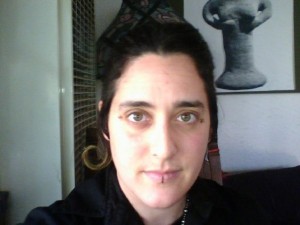 I know of many others who are environmentally sensitive looking for, but so far excluded from, community living. There is Jamie Isman, a 34-year-old community organizer, activist, and facilitator of rituals that integrate earth and goddess spirituality with Jewish practice. Jamie is also a singer/songwriter, astrologer, clairvoyant, and all around mystic who loves to share her ethereal vision. An avid cook, she loves to nourish people with healthy meals including lacto-fermented and dehydrated foods. Disabled by environmental illness as well as a physical assault, Jamie recently fled the toxic urban landscape of Oakland, California to find refuge in the desolate mountains of northeast Arizona. Although she appreciates the beauty, peace and clean air there, she is craving human connection that comes from community. Jamie seeks community free from all chemicals, wood smoke and barbecues, gas/propane, fragranced products, mold contamination, and cigarette smoke. You can contact her at oracleofnow.wordpress.com/.
I know of many others who are environmentally sensitive looking for, but so far excluded from, community living. There is Jamie Isman, a 34-year-old community organizer, activist, and facilitator of rituals that integrate earth and goddess spirituality with Jewish practice. Jamie is also a singer/songwriter, astrologer, clairvoyant, and all around mystic who loves to share her ethereal vision. An avid cook, she loves to nourish people with healthy meals including lacto-fermented and dehydrated foods. Disabled by environmental illness as well as a physical assault, Jamie recently fled the toxic urban landscape of Oakland, California to find refuge in the desolate mountains of northeast Arizona. Although she appreciates the beauty, peace and clean air there, she is craving human connection that comes from community. Jamie seeks community free from all chemicals, wood smoke and barbecues, gas/propane, fragranced products, mold contamination, and cigarette smoke. You can contact her at oracleofnow.wordpress.com/.
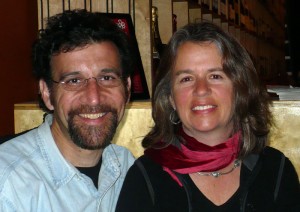 Mary and Keith, who both have mild chemical sensitivities, recently left their beloved home, careers, heath care providers, and dear friends in western Massachussetts in search of a safe ecovillage they could call home (read about their cross-country roadtrip here: maryandkeith.blogspot.com). Some of the gifts they have to offer a community include laughter, yoga, nonprofit program development, event coordination, nursing and hospice care, earth stewardship, elder/child/pet care, and cooking. They are looking for an ecovillage that is free of chemically fragranced products and essential oils, car exhaust, lighter fluid, wood smoke, fresh tar, and other pollutants. Speaking about their current adventure visiting intentional communities across America in search of a safe haven, Mary and Keith share their experience:
Mary and Keith, who both have mild chemical sensitivities, recently left their beloved home, careers, heath care providers, and dear friends in western Massachussetts in search of a safe ecovillage they could call home (read about their cross-country roadtrip here: maryandkeith.blogspot.com). Some of the gifts they have to offer a community include laughter, yoga, nonprofit program development, event coordination, nursing and hospice care, earth stewardship, elder/child/pet care, and cooking. They are looking for an ecovillage that is free of chemically fragranced products and essential oils, car exhaust, lighter fluid, wood smoke, fresh tar, and other pollutants. Speaking about their current adventure visiting intentional communities across America in search of a safe haven, Mary and Keith share their experience:
“Imagine yourself excitedly arriving to an intentional community that prides itself on living a sustainable life close to the land. To your dismay, you quickly discover that the members of the community use toxic mainstream products like Tide and Bounce, which adversely affect your health and pollute the earth. These products, incompatible with sustainable living practices, preclude you not only from membership in the community, but also from a healthy visit due to the deleterious impact on your health. As members of the chemically sensitive community, we strongly encourage and invite intentional communities to use all natural and fragrance-free products!”
Moving forward
Community living is so badly needed for those with chronic environmental illness that I have decided to create a 501(c)3 nonprofit called re|shelter (reshelter.org) with my dear friend and fellow EI survivor Julie Laffin in order to address the housing needs of those with environmental intolerances. As part of our goal, we hope to explore solutions that facilitate the inclusion of those with EI in intentional community living.
Ideas we have on how to further this conversation:
• IC.org to provide a public listing of communities that are EI friendly/aware, including a contact person;
• Reshelter.org to maintain a private listing of EIs wishing to be placed in community;
• Intentional communities to incorporate specific language about acceptable personal care and laundry products, building materials, etc. into community rules, and – most importantly – to enforce these rules;
• Reshelter.org to provide a template for such language;
• Educational workshops to be given in participating intentional communities about accommodating disability from environmental illness;
• Reshelter.org to explore funding solutions for the creation of non-toxic housing in existing intentional communities as well as the formation of new communities.
If there are any communities out there that are already accommodating those with environmental sensitivities and want to share their solutions, I would love to hear from you. To those communities interested in becoming a healthier, more inclusive home for those with environmental intolerances, please join this important conversation. You can contact me at planetthrive.com/contact-us or leave a comment under this article.
To learn more about the housing needs of those with environmental intolerances, please see the resources at reshelter.org and read the Safer Construction Tips for the Environmentally Sensitive PDF brochure. Blessings to all those working to create a saner, more humane world.
Thank you to Jamie Isman and Mary Rives for editing assistance with this article.
1 Fred Lanphear, “Embracing a Terminal Illness,” Communities: Life in Cooperative Culture, Issue #145, Winter 2009
2 “Bene’s Battle,” PlanetThrive.com
3 Joshua Canter, “The True Need for Community,” Communities: Life in Cooperative Culture, Issue #145, Winter 2009
4 Sweigh Spilkin, “Meaning as Medicine in Chronic Illness,” PlanetThrive.com
5 Gerd Oberfeld, M.D., “International Study of Asthma and Allergies in Childhood”
6 Geoffrey Lean, “Germany warns citizens to avoid using Wi-Fi,” The Independent, September 09, 2007
7 Geoffrey Lean, “EU watchdog calls for urgent action on Wi-Fi radiation,” The Independent, September 16, 2007
© 2010, Julie Genser and Communities magazine. This article first appeared in Communities: Educating for Sustainability, Issue #147, Summer 2010; for further information on Communities: communities.ic.org.
 Julie Genser is a former photographer, writer and certified holistic health counselor whose life was derailed by extensive food and chemical sensitivities. In 2004 she completed the Ecovillage and Permaculture Design Certificate Program at Lost Valley Educational Center in Dexter, Oregon. A few weeks later she developed severe environmental illness and had to drop out of ECOSA Institute, where she had just begun an intensive semester in sustainable architecture. She now lives in the desolate beauty of rural Arizona, where she dreams of living in community like the one she discovered at Lost Valley. She provides online community to those with environmental illness through her website PlanetThrive.com.
Julie Genser is a former photographer, writer and certified holistic health counselor whose life was derailed by extensive food and chemical sensitivities. In 2004 she completed the Ecovillage and Permaculture Design Certificate Program at Lost Valley Educational Center in Dexter, Oregon. A few weeks later she developed severe environmental illness and had to drop out of ECOSA Institute, where she had just begun an intensive semester in sustainable architecture. She now lives in the desolate beauty of rural Arizona, where she dreams of living in community like the one she discovered at Lost Valley. She provides online community to those with environmental illness through her website PlanetThrive.com.







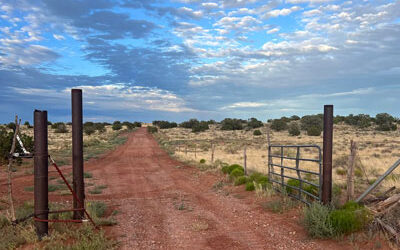
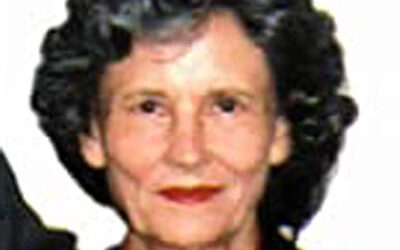

Wonderful article, Julie!
Thank you Kate!! Appreciate your feedback, as always. :-)
If you’d like to send in a positive letter to the editor thanking them for publishing this article, you can send your message to [email protected].
Someone wrote in to me privately with a recommendation for an electricity-free intentional community. This is what they said:
Hi Julie, I learned a lot from your article about EI and wanted to tell you about the Possibilities Alliance in La Plata, MO, they are a great inspiring community that fit the bill. Ethan and Sarah Hughes would be the people to contact, check out the link below to find out more, Possibility Alliance.
Oh…Thank God (!) I found you. Oh how refreshing. I was searching (on my shielded computer I might add) for a community that has no WIFI. It’s so refreshing to hear a fellow voice outthere. So many eco-communities that have WIFI – and even boast of it – how ironic – not only harming the people but our wildlife, birds, bees and now trees. I am on a mission to spread the word and hopefully to bring enlightenment to our plight. I’m in UK and recently heard about plan in Wales to allow low impact dwellings but they also have as part of an overall plan – SMART meters which emit WIFI. You may be interested in the organisation “One Planet” as I imagine they have branches all over the globe and it is good to hear our voices from all countries with our housing need. Take Care x